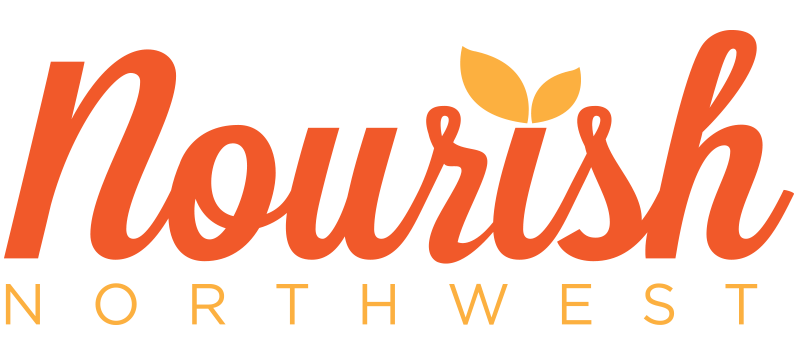TR-what?!
Guest post by Natalie Clements- TRX, Tabata and Pilates Instructor at Nourish Northwest
In the world of group fitness, there are so many types of formats and names for different classes that as an instructor, I’m often asked to explain them or describe the differences. My first few years of teaching were at the WSU student recreation center, and with as many instructors and formats that we offered, we were always trying to come up with creative, enticing names for different classes. Granted, some were better than others, and most were self-explanatory, but others just confused people (think Tabatilates). But in 4 years of teaching it has been three simple letters- TRX- that puzzle people the most.
Originally developed in the Navy SEALs, the TRX Suspension Trainer has been used for years to train the military and professional athletes, but it is finally starting to gain popularity in the mainstream fitness world! You may have spotted the bright yellow straps hanging in your local gym or praised in the media and recent magazines, but few people really understand how they work or what to actually do with them. So while you may have seen the straps sprawled across Zac Effron’s bare shoulders in “People,” the perks of TRX go so much further than its portable, can-do-anywhere performance.

Use of the TRX develops strength, balance, and muscular endurance all at once, and requires you to use your core throughout the entire workout. Because you’re using your whole body in every exercise, you’re able to get an incredibly fast, effective total-body workout.
While the words “suspension training” can conjure up images of acrobatic swings or getting tangled in ropes, you can rest assured that all exercises using the TRX can be done with at least one limb touching the ground. Because you’re using gravity against your own bodyweight, you can simply adjust your foot on the floor to add or decrease resistance; this allows you to control how much you want to challenge yourself, and makes every exercise doable for anyone.
Let’s take a chest press for example. A traditional chest press usually involves lying on a bench, with bar or dumbbells in hand. While it certainly works the upper body, the minor muscles in your back are stabilized by the bench, and the rest of your body can easily be disengaged. Move the exercise to a TRX where your feet are planted firmly on the ground, hands are holding onto the straps, and the front of your body is facing the floor; instantly this move becomes a more effective and challenging use of your time. In this position, much like in a plank, your entire body has to work; everything from your hamstrings and quads, to your glutes and deepest abs are working to keep the body in a flat line. Then, as you lower your body down (much like a push-up), not only are the major upper-body muscles working as before, but now you’re having to use more minor, stabilizing muscles to support your bodyweight. It’s why so many people come up to me after classes toting they’re sore in places they didn’t think existed- they’re working muscles that traditional forward-back exercises don’t use!

So what can you expect from a TRX group-fitness class or private session?
Though all instructors and formats vary, most TRX classes focus more on strength and endurance than on cardio. The goal of the strength exercises is to move at a slower, very controlled pace, so some instructors will include cardio circuits to keep your heart rate elevated. Again, each exercise is going to challenge your stabilizing muscles, especially the core, so expect to feel a little off-balance at first. The teetering or shaking that people experience shows the need for exercises like TRX, and is a wake-up to all the benefits suspension-training can bring!

Most importantly, I encourage new clients to always give TRX more than one try. While the straps are great for anyone of any fitness level, many of the exercises do take some getting used to, and can cause the first class or so to move a little slower than most people would like.
The TRX motto is one that has always inspired me; it’s “Make Your Body Your Machine.” Other than the straps and very little space, all you need is your bodyweight for an incredibly challenging workout. In fact, no matter what crazy name you call it- TRX Blast, TRX Fusion, Total Resistance X-factor (yes, that was a class) – it’s these classes that I see the most results and the most changes in my clients. You are stronger than you think you are, both inside and out, and TRX is a great opportunity to show it to yourself!



